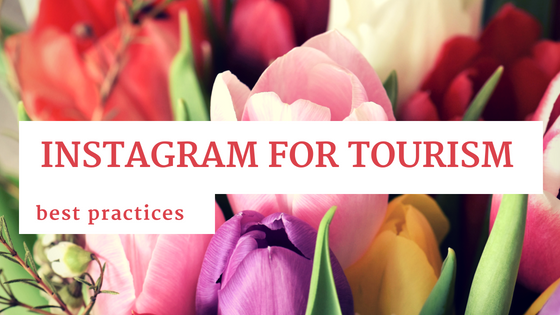Instagram for Tourism: Best Practices
Taking on social media can be challenging, especially with limited time and budget. In this series, I’ll explore best practices for destinations and attractions across different channels. In this blog, we’ll explore Instagram for tourism.

Before we dive in- if you need a quick refresher on why your destination should be on Instagram, check out my blog on getting started.
As we’ve discussed, more people are using Instagram as a search engine to research destinations they’re interested in visiting and to make their travel plans. They’re also using the platform to discover new places they may be interested in visiting in the future. Instagram undoubtedly has a crucial role in tourism marketing, so the question for destinations becomes, how can you optimize Instagram for tourism? Through research, exploration, and trial and error, I’ve identified six best practices.
Frequent Posting
While the changing nature of Instagram’s (Facebook) algorithm can make it a challenge for businesses to keep their reach up, consistent posting is crucial. The only thing more penalized than posting too much is posting too little. While this can be a tricky line to walk, a good baseline to start with is 2-4 times per week, and working up as needed. Posting every day can be beneficial to accounts with the right number of followers. That number can be hard to determine, but trial and error (and a follower count in the thousands) is the best way to find out if it’s right for you. If you notice your engagement level dropping dramatically, then Instagram is penalizing you for posting too frequently.
However, with the new algorithm, the half-life of a post is actually much longer than it used to be. Posts tend to rotate in visibility, popping up on people’s feeds anywhere from seconds after posting to a week later. You may notice bursts of likes on a week-old photo- a pretty good indication it’s back in the algorithmic circulation.
Post to stories
Instagram stories are a widely successful knockoff of Snapchat. Existing for a mere 24 hours (the epitome of ephemeral content), stories can be as long or short as you want them to be. Stories appear at the top of your followers feed in a fixed position, ensuring there’s no searching for them. It’s a great way to get more eyes on your brand and connect with your followers, especially if they’re not seeing your posts in their feed.
Content posted in stories can be anything from a suggested “day on the town” itinerary that tags local partners to a grand opening of a new attraction or just a behind-the-scenes snippet. Unlike Snapchat, Instagram allows you to pull from any photo or video added to your phone in the last 24 hours without letting your followers know it wasn’t taken live.
An added bonus- it’s an unverified but widely believed inside secret that posting to stories helps your actual posts rank higher in your followers feed.
Engage with local influencers
Influencers don’t need to have millions of followers to be influential! Seek out and identify local influencers who already exist in your area. Connect with them, engage with their content, regram their photos (if they fit), and chances are they’ll return the favor. This can facilitate building a relationship that can help in the virtual and physical world.
Maintain a level of quality
Having an eye for photography is an acquired skill and simply having an Instagram account does not a photographer make. While it can be tempting to post any and all photos your account has been tagged in, maintaining a certain level of quality will help elevate your destination and the overall aesthetics of your account. When people search for you, they want to see the best of the best. Be selective with the posts you feature to give your feed an authentic yet professional vibe.
Always look at the comments
While this may sound counter-intuitive, monitoring the comments is the opposite of feeding the trolls. Keep a close eye on comments, especially in the hours immediately following posting. This helps quickly weed out inflammatory or negative comments, and respond quickly to questions or excitement. Many people use a brand’s latest post as a chance to ask questions- you don’t want to leave them hanging!
Use hashtags
Hashtags are to social media what SEO is to websites. It helps index and give context to your post and makes it easily searchable to people who are looking for what you’re doing. However, it’s not aesthetically pleasing to see a post with 10 hashtags cluttering up your newsfeed. So how can you keep your posts simple and pleasing, while still tapping into the power of hashtags? Put them in the comments. Immediately after posting, comment on your own post with the hashtags you want to use. One caveat- this has to be done soon after posting or it won’t be indexed correctly.
Author
Related Posts
Collaboration Drives Sustainable Tourism
Sustainable tourism has growing importance in the world of travel and tourism. As destinations grow in popularity, they need to collaborate closely with residents, local…
Marketing for Group Travel: Building Solid Relationships with Tour Operators
Group travel is a significant segment of the tourism market, and if you want to see those buses pulling up to the curb and filling…
